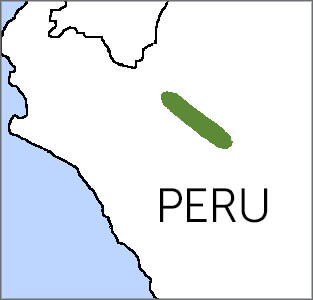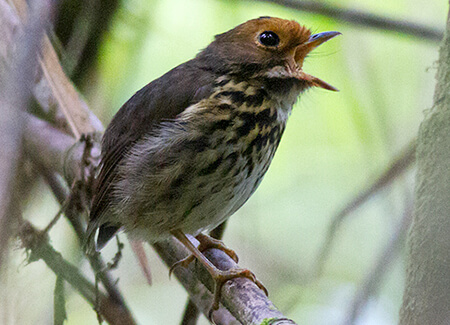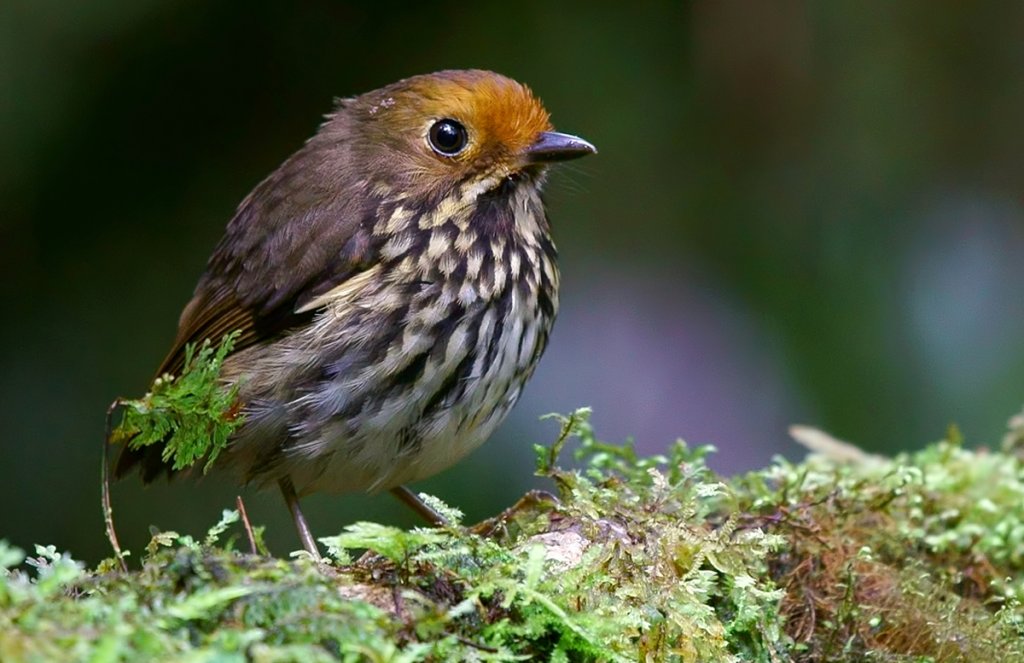 A simple whistle in the dense bamboo is all that might reveal the presence of the secretive and highly endangered Ochre-fronted Antpitta. This plump, long-legged bird is less than five inches long, with an olive-brown back and blackeaked white underparts. Males have the ochre-buff forehead that gives this species its name.
A simple whistle in the dense bamboo is all that might reveal the presence of the secretive and highly endangered Ochre-fronted Antpitta. This plump, long-legged bird is less than five inches long, with an olive-brown back and blackeaked white underparts. Males have the ochre-buff forehead that gives this species its name.
This bird was only discovered in 1976, and until very recently, sightings in the field were almost unknown. ABC's Daniel J. Lebbin was one of the first to take a full-length photo of this species in the wild. He captured the bird on camera in 2010 at the Abra Patricia Reserve.
Abra Patricia, established in 2004 by ABC and in-country Peruvian partner ECOAN (Asociación Ecosistemas Andinos), spans over 24,000 acres of protected habitat
One of the biggest threats to the Ochre-fronted Antpitta is habitat loss, mostly due to clearing of forest for agriculture. ABC has modeled the range of this species in a planning document for the Marañon-Alto Mayo Conservation Corridor, and continues work with ECOAN to acquire more land to conserve habitat for this antpitta and other threatened birds.
Sign up for ABC's eNews to learn how you can help protect birds

Ochre-fronted Antpitta by Sam Woods, Tropical Birding
Abra Patricia is designated an Alliance for Zero Extinction (AZE) site because of the presence of both this antpitta and the endangered Long-whiskered Owlet. The site is part of ABC's Conservation Birding network, so birders can easily visit and take a chance on finding this elusive species. Territories of both species overlap on the reserve's owlet trail, about an hour walk downhill from the Owlet Lodge.
Donate to support ABC's conservation mission!




















































